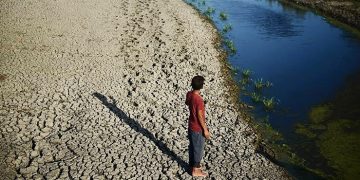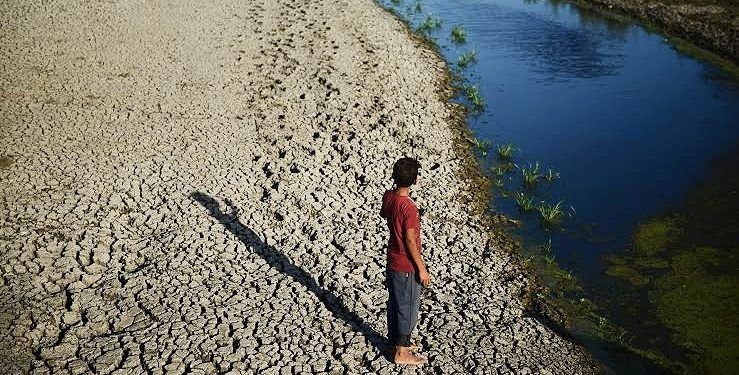Climate change has led to the shrinking of more than half of the world’s large lakes and reservoirs since the early 1990s, raising concerns about water availability for agriculture, hydropower, and human consumption, as per a study published on Thursday.
A team of international researchers discovered that crucial water sources, including the Caspian Sea and Lake Titicaca, experienced a cumulative water loss of approximately 22 gigatonnes per year over nearly three decades.
This loss amounts to about 17 times the volume of Lake Mead, the largest reservoir in the United States.
The study, led by Fangfang Yao from the University of Virginia and published in the Journal Science, indicated that 56% of the decline in natural lakes was attributed to climate warming and human consumption, with warming being the predominant factor.
While climate scientists expect arid regions to become drier and wet areas to become wetter due to climate change, the study revealed significant water loss even in humid regions.
Yao emphasized the importance of not overlooking this aspect.
By utilizing satellite measurements, climate models, and hydrological models, scientists assessed nearly 2,000 large lakes.
The findings highlighted that unsustainable human activities, changes in rainfall and runoff, sedimentation, and rising temperatures have collectively contributed to declining lake levels globally, with 53% of the lakes experiencing a decrease from 1992 to 2020.
This decline in water availability directly affects nearly 2 billion people residing in drying lake basins, with many regions already grappling with water shortages in recent years.
The study further reiterated the urgent need to limit global warming to less than 1.5 degrees Celsius (2.7 degrees Fahrenheit) to mitigate the most catastrophic consequences of climate change.
The Earth has already warmed by approximately 1.1 degrees Celsius (1.9 degrees Fahrenheit).
The researchers also observed that unsustainable human practices have caused lakes such as the Aral Sea and the Dead Sea to dry up in Central Asia and the Middle East, respectively.
Rising temperatures have impacted lakes in Afghanistan, Egypt, and Mongolia, exacerbating water loss to the atmosphere.
Also, water levels in a quarter of the lakes assessed showed an increase, primarily due to dam construction in remote areas like the Inner Tibetan Plateau.


































